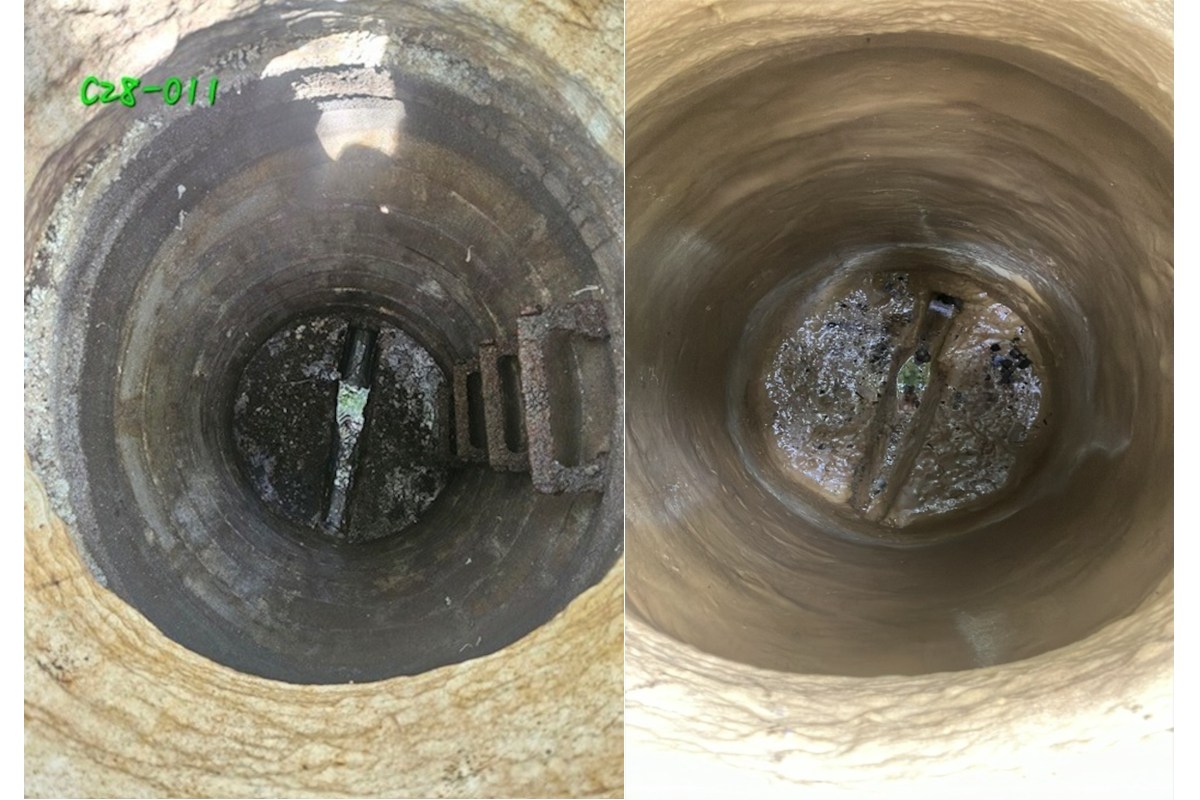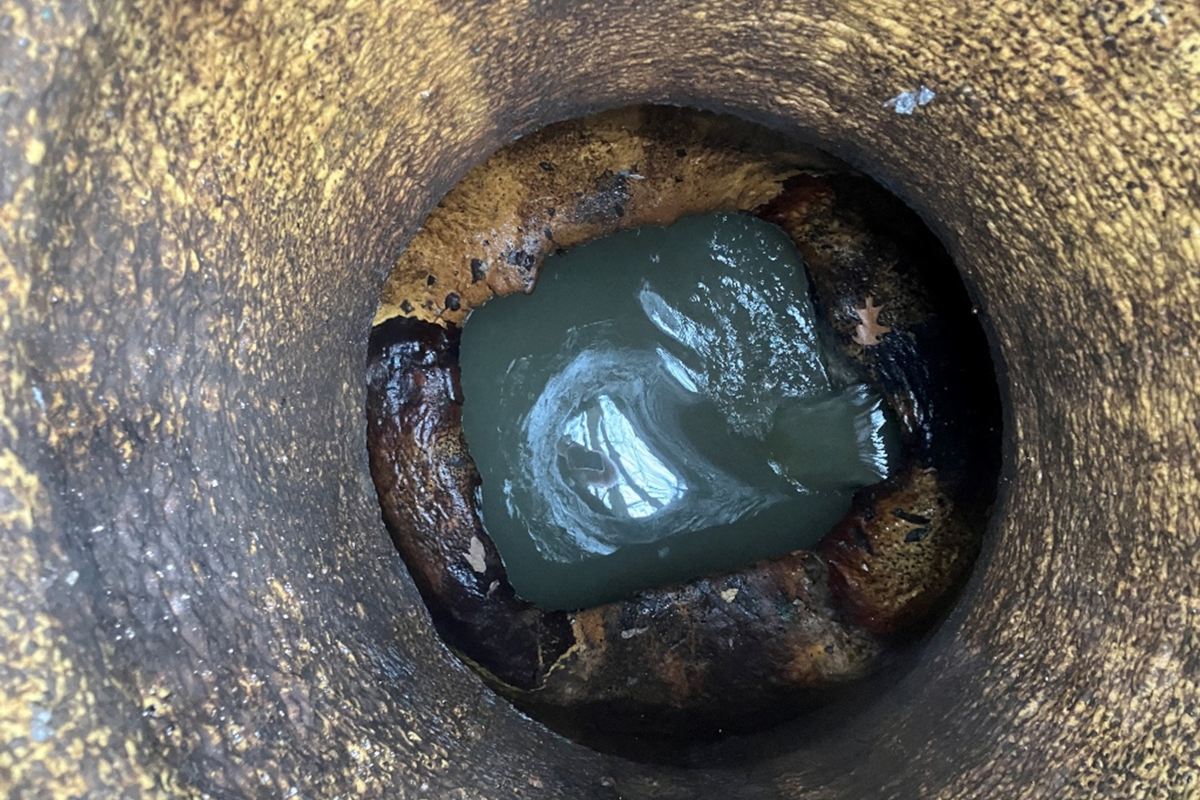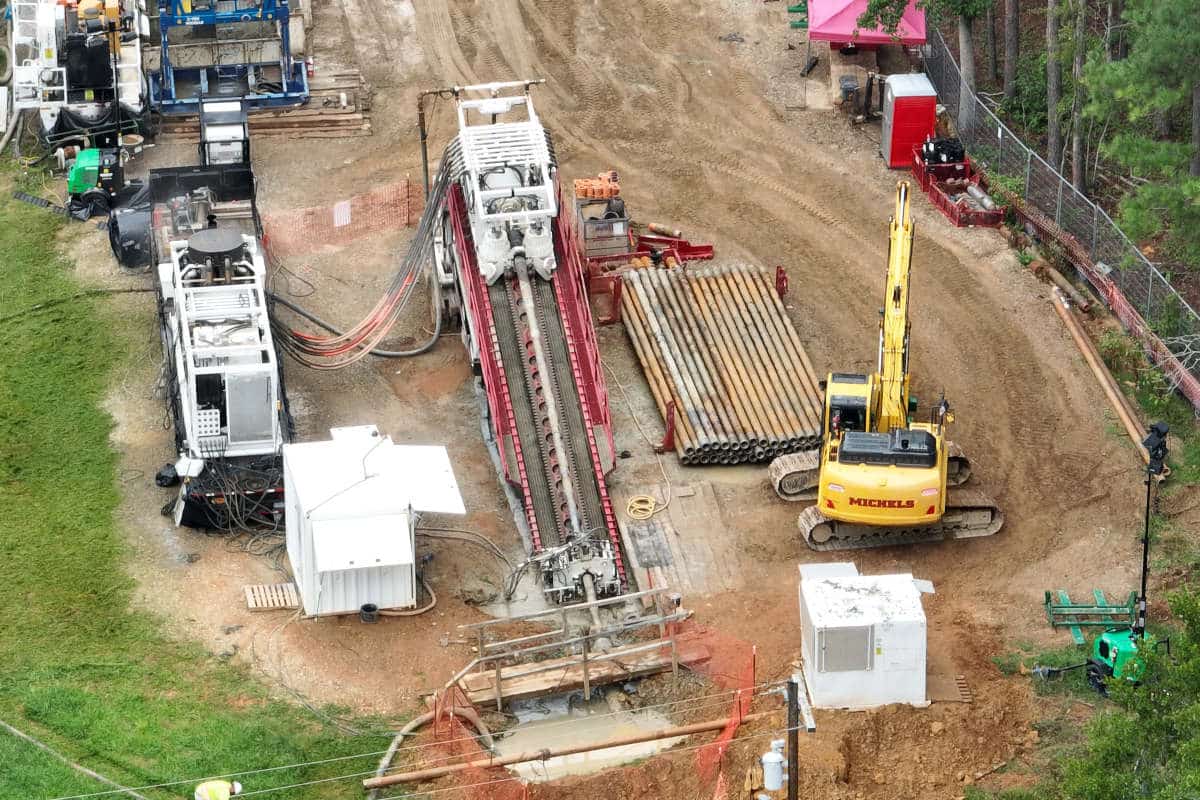
NASSCO Report – DPU-W Sanitary Manhole Rehabilitation
Located 28 miles west of Chicago, The City of Naperville, Illinois, has one of the largest water/wastewater utilities in the state. The City of Naperville’s Department of Public Utilities – Water (DPU-W) is nationally known for its proactive system maintenance.
The DPU-W manages the water distribution system, the wastewater collection system and wastewater treatment. Sanitary sewer rehabilitation projects improve system performance and reduce inflow and infiltration (I&I) on both the public and private sides. These projects are a major part of that maintenance.
Sanitary structure rehabilitation is a key component of the DPU-W annual sanitary sewer rehabilitation program. In 2000, the DPU-W rehabilitated a large trunk sewer. This included the installation of a cured-in-place pipe (CIPP) in phase one of the project. The rehabilitation of 20 sanitary structures followed in phase two.
The sanitary manholes ranged in diameters from 48 to 60 in., and one vault structure in the size of 72×72 square inches. As in typical sanitary structures along large-diameter sewers, the manholes and the vault experienced H2S corrosion. This corrosion resulted in structural and I&I issues.
The water utility wanted a trenchless product that would restore structural integrity to the manholes. They needed to protect the structures from further deterioration due to corrosive gases. Additionally, they aimed to eliminate I&I. All this was required while returning the manholes to service quickly to reduce the time needed for bypass pumping.
DPU-W Selects a Spray-Applied Manhole Solution
After reviewing several different types of structure rehabilitation products, a spray-on polyurethane liner was determined to best meet the goals of the project.
Surface preparation included power washing the manholes and patching all holes with a cementitious product. Additionally, stopping all active infiltration was performed per the manufacturer’s requirements. The polyurethane was then spray-applied to the thickness of 250 mils (1/4 in.) on each of the designated structures. For the manholes, this included from the manhole frame bearing surface down to the manhole invert, including the channel.
DPU-W staff were on-site to ensure the equipment and the manhole lining process followed the specifications. This included all surface preparation work and chemical grouting for leak stoppage. The application of the polyurethane liner and the required adhesion and holiday (spark) testing were also supervised.
During the testing process, any failures identified (either holidays or failures of the adhesion test) were repaired immediately by the contractor. Repairs followed the manufacturer’s repair processes. Utility staff also used adhesion testing to confirm that the thickness of the polyurethane liner met the 250 mil minimum thickness requirements.
After all final visual inspections were completed by the utility inspector(s), all sanitary structures and manholes were placed back into service. Using the polyurethane product was a critical component in reducing the time frame needed for bypass pumping. It helped keep the entire project on the three-month completion goal.

Inspecting the Rehabbed Manholes
Of the 20 manholes rehabilitated with the polyurethane liner, only 15 percent, or three manholes, needed additional repairs after all testing. Utility inspectors worked with the contractor to ensure all steps of the lining process meet the bid specification. Moreover, they checked that the manufacturer requirements were followed. This ensured the finished product would meet the goals set for this project. Furthermore, it reduced the chance of return trips for the contractor.
Over the years, every manhole sprayed with the polyurethane spray liner was inspected under saturated ground conditions, frozen ground, and drought conditions. These manholes are located in grassy areas, concrete sidewalks, along a local river bank, and paved roads. Under these many conditions, aside from normal staining on any structure in a wastewater collection system, no defects in the polyurethane spray liner were found. This includes the weakest portion of a manhole, the upper structure, where the metal frame meets the adjusting rings or cone section.
The polyurethane liners installed on these manholes 25 years ago are still functioning as designed. The DPU-W fully expects that the polyurethane liner will meet the manufacturer’s stated 50-year life.
The success and the long-term cost effectiveness of this rehabilitation approach has resulted in the city DPU-W specifying the use of a spray-on polyurethane liner for all sanitary sewer structures. This includes pump station wet wells, valve vaults, manholes, and diversion structures within Naperville.




